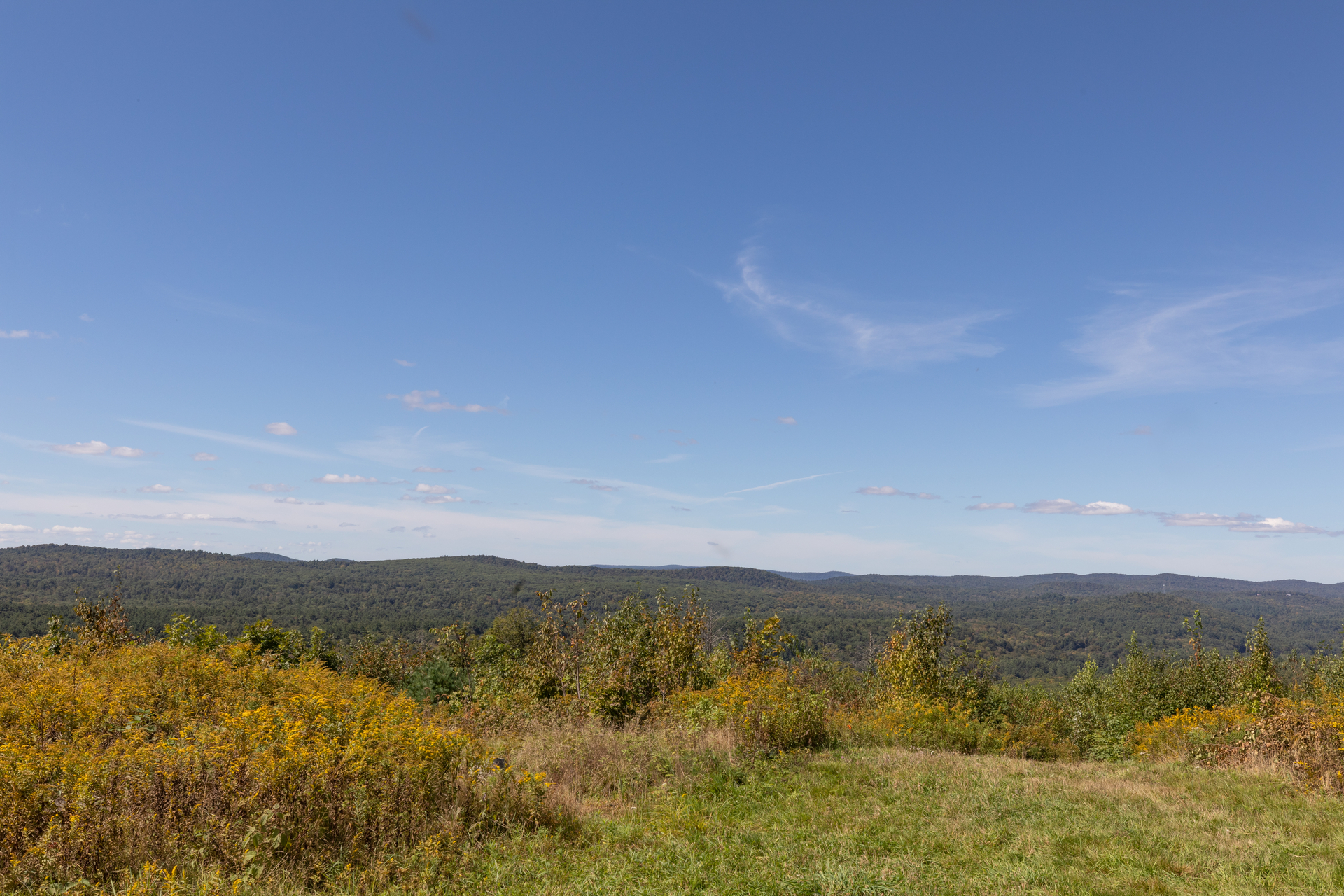Old Baldy Thicket: A Resilient Landscape
October 21, 2021
Mass Audubon's Old Baldy Wildlife Sanctuary is a 154-acre property that offers a nearly 360° panorama from the hilltop summit, cleared by a previous landowner who sought to subdivide the property.
The habitat has been maintained to benefit populations of dozens of wildlife species reliant on young forest.
Helping Wildlife
Old Baldy Mountain gets its name from the open summit, but without natural or human disturbance, a woodland would grow there. Annual mowing ensures that the top of the mountain retains its open character. But what about the thicket on the mountain’s flank?
In early 2017 Mass Audubon cut trees and shrubs in this area to create a 16-acre patch of woody "early successional" habitat. This habitat type is important because it hosts dozens of wildlife species, from butterflies to songbirds to rabbits, that tend not to occur in mature forest or meadow settings. Many of these species are of conservation concern due to long-term population declines associated with human development of the landscape.
Natural disturbance process that formerly provided thicket habitats such as periodic fires, ice scouring along rivers, and ubiquitous beaver activity have now been greatly curtailed by human development. Active management to create and maintain patches of this habitat helps support populations of these species in the region.
The View
The panoramic view from Old Baldy offers an uncommon sight in Massachusetts: forest dominates in every direction, with minor interruption by agricultural or built land uses.
While they’re mainly hidden in the trees, scattered throughout the landscape are wetlands and other areas with dense shrub cover. Some of these are the result of timber harvest or the maintenance of powerline rights-of-way, while others are caused by natural disturbances like storms or flooding. As these areas can provide important habitat functions, Mass Audubon is maintaining this early-successional area at Old Baldy.
"Early Succession"
Most of New England naturally grows trees, due to its climate, soils, and other factors. Abandoned fields in the region become dominated by woody plants in only a few years, and generally are covered by saplings in less than 20 years, which then mature into forest over the next decades.
Keeping an area as a young forest or shrubland requires periodic disturbance, resetting the vegetation to an earlier phase. The high-light environment near the ground following disturbance promotes the rapid and prolific flush of vegetation, forming dense thickets that provide food and shelter for wildlife.
Native New England Cottontail
One of the species that requires such dense vegetation is the New England Cottontail (Sylvilagus transitionalis), a native rabbit that was once common in many areas of New England and New York. Due to several factors, led by habitat loss, populations of this species are currently reduced to only a few areas in the region.
The southwestern section of Massachusetts is now one of the only places in the state where New England Cottontail still occur. Creating habitat patches for this species in this area is a critical conservation action to prevent this species from become extirpated in the state.
Plan your visit to Old Baldy Wildlife Sanctuary >
This project was funded through a Massachusetts Division of Fisheries & Wildlife Habitat Management Grant.



